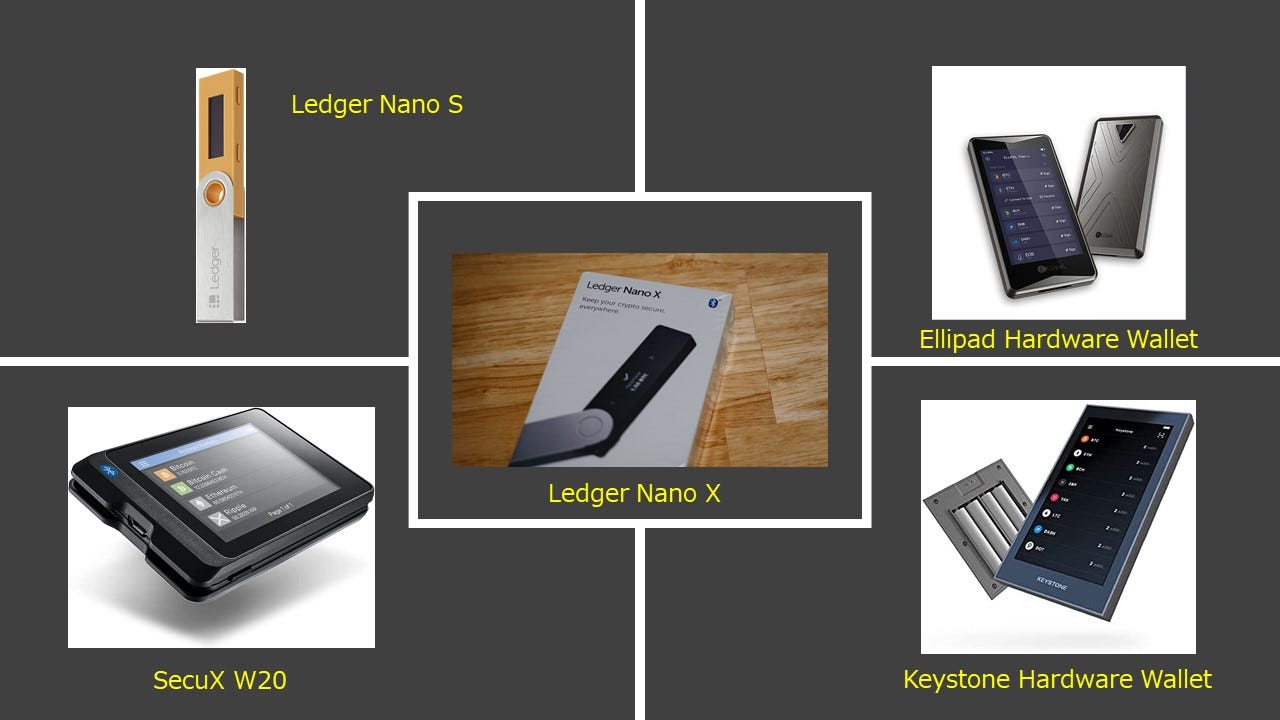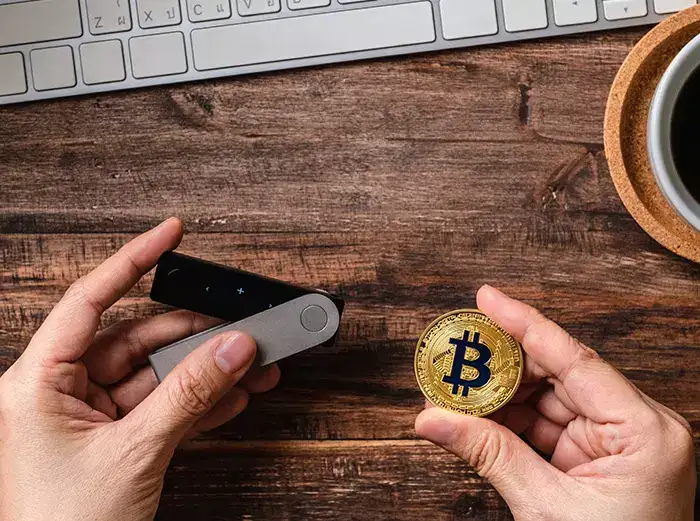
Protection against SIM swapping attacks is crucial for anyone using a hardware wallet for cryptocurrencies. This growing threat can compromise your wallet recovery process, putting your assets at risk. By implementing security measures like two-factor authentication and avoiding personal information exposure, you can greatly enhance your defenses. Understanding the methods attackers use and taking proactive steps are key to maintaining the integrity of your financial holdings. Ensure your recovery phrases and PINs are kept secure and private to safeguard your investments.
Understanding Sim Swapping
While smartphones have become indispensable in our digital lives, they remain a target for cybercriminals through methods such as SIM swapping. This technique allows hackers to gain control over a victim’s phone number by convincing the mobile carrier to transfer the number to a new SIM card controlled by the attacker. Once in control, they can intercept calls and messages, gaining access to sensitive information and even bypassing two-factor authentication.
What is Sim Swapping?
Any individual with malicious intent can employ SIM swapping to hijack a victim’s phone number. By using social engineering tactics, such as gathering personal information from social media or data breaches, they exploit weaknesses in mobile carrier verification processes. Once the attack is successful, the victim’s phone becomes useless for calls or text messages, while the hacker can reset passwords and steal identities.
Current Threat Landscape
On the global stage, SIM swapping incidents have surged, impacting individuals and businesses alike. With the proliferation of digitally driven assets, such as cryptocurrency wallets, hackers seek to exploit unsuspecting users through these vulnerabilities. Victims often face significant financial losses, further emphasizing the importance of safeguarding personal information.
With the increasing sophistication of attacks, criminal organizations have turned SIM swapping into a lucrative enterprise. Reports indicate that targeted attacks have resulted in losses totaling millions of dollars, as hackers leverage the stolen information for financial gain. This alarming trend highlights the necessity of enhanced security measures for personal and financial protection against such threats.
Hardware Wallets Overview
Assuming you are considering advanced security measures for storing your cryptocurrencies, hardware wallets are one of the most effective solutions available today. These devices are specifically designed to securely store your private keys offline, protecting them from online threats and malware. Their physical nature makes them less susceptible to hacking attempts compared to software wallets, which are frequently targeted.
Hardware wallets often come with built-in security features such as PIN codes and recovery seeds, adding multiple layers of protection. They are compatible with various cryptocurrencies and user-friendly, making it simple for both new and experienced users to manage their assets safely. This enhanced security mechanism makes hardware wallets a preferred choice for individuals holding significant cryptocurrency investments.
How Hardware Wallets Work
Hardware wallets function by generating and storing your private keys in a secure environment. Unlike software wallets, which expose your keys to potential online vulnerabilities, hardware wallets keep them isolated from the internet. Transactions are signed within the wallet itself, ensuring that sensitive information never leaves the device, even while connected to a computer or mobile device. This guarantees maximum protection against online threats.
When you want to make a transaction, the hardware wallet will communicate with the software interface while keeping your private keys secure internally. Users must confirm transactions on the device itself, adding an extra layer of authentication. This design significantly reduces the risk of unauthorized access to your funds through phishing or malware attacks.
Benefits of Using Hardware Wallets
Using hardware wallets offers numerous advantages, particularly in terms of security. They are often viewed as one of the safest storage solutions for cryptocurrencies, as they protect your assets from online threats and unauthorized access. Additionally, with easy backup and recovery options, hardware wallets provide peace of mind during catastrophic hardware failures or lost devices. Having your private keys stored offline ensures that even if your computer or network is compromised, your funds remain protected.
Understanding the security benefits of hardware wallets is necessary for any cryptocurrency holder. They drastically decrease the risk of theft associated with online wallets and keep your private keys in a secure, offline environment. Furthermore, hardware wallets are designed to facilitate user-friendly management of cryptocurrencies without sacrificing security. By choosing this method of storage, you are implementing a significant measure of protection for your digital assets against potential cyber threats.
Risks Associated with Sim Swapping
Even though hardware wallets are generally secure, the emergence of SIM swapping poses significant threats to their integrity. When a malicious actor successfully executes a SIM swap, they can gain control over the victim’s phone number, granting them access to SMS-based two-factor authentication (2FA) codes and other sensitive information. This compromised access may lead to unauthorized transactions or complete theft of funds from hardware wallets linked to the affected accounts.
Direct Risks to Hardware Wallets
Above all, the direct risks to hardware wallets due to SIM swapping can lead to immediate financial loss. Once a hacker intercepts the 2FA codes meant for a hardware wallet, they can bypass security measures, allowing them to transfer cryptocurrencies to their own wallets. This can happen swiftly, with victims often unaware until it is too late, underscoring the need for robust security practices beyond just traditional hardware wallet measures.
Indirect Risks to Recovery Processes
Any successful SIM swap can also compromise the recovery processes associated with hardware wallets. Victims may find it difficult to regain access to their accounts or recover their funds because attackers can intercept recovery keys or reset passwords. This indirectly threatens the overall security of the recovery process, leaving users vulnerable and without their assets during what should be a straightforward recovery.
Indirectly, the repercussions of SIM swapping can extend beyond immediate financial loss. Victims often experience emotional distress and a sense of violation, creating a negative psychological impact. Furthermore, the inability to recover funds can lead to a loss of trust in digital assets and security technologies, deterring users from leveraging these innovative solutions in the future.
Protection Strategies
Now, implementing robust protection strategies is important for safeguarding your hardware wallet recovery process against potential threats like sim swapping. These strategies encompass securing personal information, enhancing two-factor authentication, and being vigilant about suspicious activities that could compromise your assets.
Securing Personal Information
Against the backdrop of increasing cyber threats, it is vital to keep your personal information private and secure. Avoid sharing sensitive details such as your phone number, email address, or recovery phrases publicly or within unsecured environments. Prioritize the use of strong, unique passwords across various accounts to limit exposure and protect against unauthorized access.
Enhancing Two-Factor Authentication
Personal security can be significantly improved by utilizing enhanced two-factor authentication (2FA) methods. Relying solely on SMS-based 2FA can be risky due to vulnerabilities associated with sim swapping. Instead, employing authenticator apps or hardware tokens provides a more robust layer of security that is less susceptible to interception.
Authentication measures should incorporate a mix of methods, including time-based one-time passwords (TOTP) and biometric verification. This multi-layered approach enhances your security profile, greatly reducing the risks of unauthorized access. By transitioning away from SMS as the primary method for 2FA, you can protect your accounts and hardware wallet recovery process from potential threats like sim swapping. Always stay informed about new security technologies that can further bolster your defenses.
Best Practices for Hardware Wallet Recovery
For users of hardware wallets, safeguarding the recovery process is fundamental to protecting their digital assets. This involves implementing stringent security measures, from the generation of the recovery seed to ensuring its safe storage. Following best practices can significantly reduce the risk of loss or theft, ensuring that the recovery process remains smooth and effective.
Recovery Seed Management
On the first line of defense in recovery seed management is the generation of a secure and unique recovery seed. It is critical to create this seed in a private environment to thwart any external observation or interference. Users should ideally use hardware wallets that allow for the generation of recovery seeds in isolation from connected devices, limiting exposure to potential malware attacks.
Safe Backup Techniques
To ensure that recovery seeds are not lost, employing effective backup techniques is key. Users should create multiple copies of their recovery seed and store them in different, secure locations. This reduces the risk of losing access to the wallet while guarding against environmental hazards, such as fires or floods. Using fireproof and waterproof containers for physical copies can enhance security and resilience.
Another recommended approach is to utilize hardware-based backup solutions that offer enhanced security over traditional paper backups. These devices can securely store recovery seeds in an encrypted format, thus guarding against unauthorized access. Additionally, while digital backups may be convenient, they expose the recovery seed to potential online vulnerabilities, making dedicated hardware solutions the safer alternative.
Monitoring and Ongoing Security
Despite implementing initial security measures, ongoing vigilance is imperative for safeguarding your hardware wallet recovery process. Regular monitoring enables users to identify any unusual activity or potential vulnerabilities that may arise over time. This proactive approach not only protects assets but also instills confidence in the long-term security of your investments.
Alongside constant vigilance, awareness of new security trends and best practices enhances protection against evolving threats. Utilizing reputable security tools and engaging with communities focused on cryptocurrency security can provide valuable insights, ensuring your defenses remain robust.
Regular Account Audits
Beside continuous monitoring, conducting regular account audits is a vital practice for maintaining security. These audits should encompass thorough checks of transaction history and account configurations to identify any unauthorized access. Additionally, changing passwords and updating recovery phrases during these audits further strengthens security measures.
Establishing a routine for these audits ensures that you remain proactive and responsive, allowing you to catch potential issues before they escalate. Scheduling these reviews quarterly or semi-annually can provide an excellent framework for ongoing accountability in your security strategy.
Staying Informed on New Threats
To effectively shield your hardware wallet and recovery processes, staying informed about emerging threats is imperative. Staying engaged with security news, following cybersecurity experts on social media, and subscribing to relevant newsletters can help you grasp evolving risks. Understanding potential vulnerabilities associated with your hardware wallet can empower you to take action before any actual harm occurs.
Threats in the cybersecurity landscape are constantly changing, making it imperative to be aware of the latest vulnerabilities and attack vectors. New phishing techniques and advanced social engineering tactics can compromise even the most secure systems, emphasizing the need for ongoing education. Leveraging resources like forums and updates from hardware wallet manufacturers can provide an edge in staying a step ahead of malicious actors.
Conclusion
The implementation of sim swapping protection is vital for securing the recovery process of hardware wallets. As cyber threats continue to evolve, ensuring that sensitive information is safeguarded from attackers becomes increasingly important. Utilizing two-factor authentication and employing robust identity verification methods can greatly minimize the risk of unauthorized access to wallet recovery options.
Additionally, users should remain vigilant about their online footprint and practice safe habits, such as regularly updating security settings and being cautious of unsolicited communications. By taking these proactive measures, individuals can effectively bolster their defenses against sim swapping attacks and protect their cryptocurrency assets over time.







